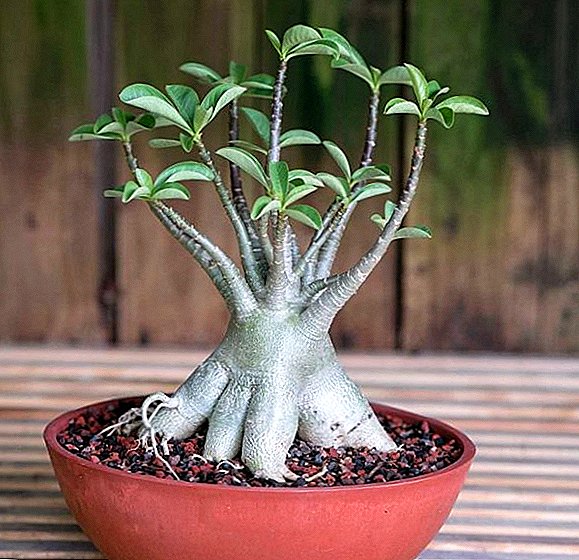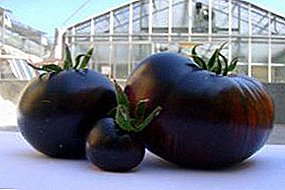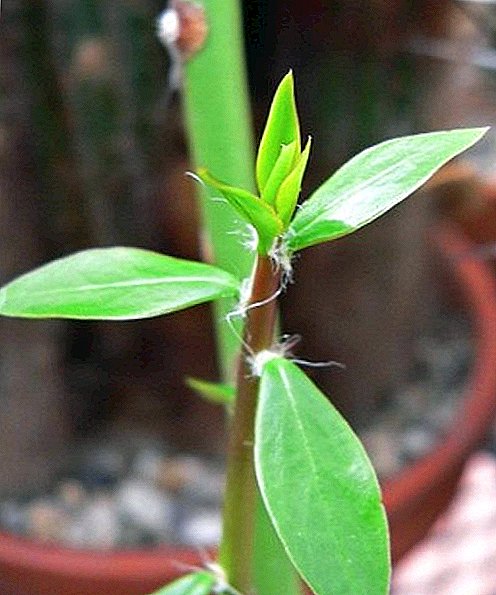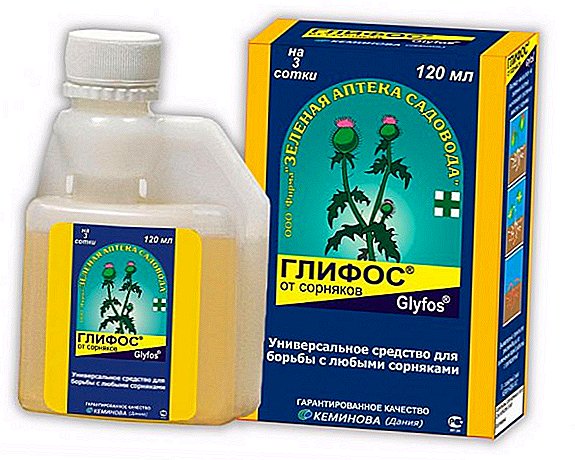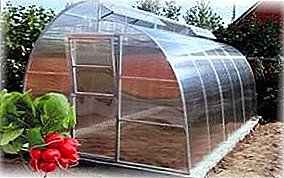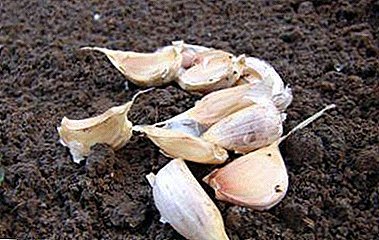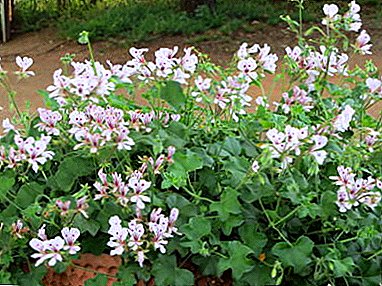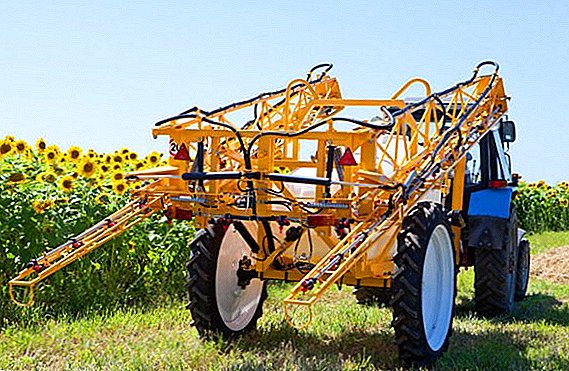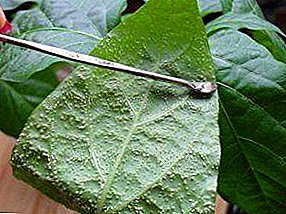
Sweet pepper is a popular crop, which is grown in greenhouses, in the soil under film or in pots on window sills and loggias.
Plants are very sensitive to care, if they are improperly placed, watered and if the temperature is not observed, they can get sick.
Peppers are threatened by numerous pests that must be controlled.
The topic of our today's article is the disease of sweet pepper and the fight against them, photos of infected plants are attached. Also find out why the seedlings of Bulgarian pepper fall?
Pests and methods of dealing with them
Let us consider the topic in more detail: the pests of sweet pepper seedlings and the fight against them, photos of damaged plants are attached.
Therefore, even before sowing peppers for seedlings, it is worth knowing as much as possible about prevention and the main pest control measures.
Aphid. Amazed plant covered with sweet dripsespecially noticeable on the stems and in the axils of the leaves. The larvae feed on juices of young shoots, peppers wither, stop flowering and the formation of fruits. Noticing the first signs of aphids, you need to start a fight with her.
The most effective way is insecticide spraying. Suitable karbofos aqueous solution or universal mixture, diluted according to the instructions on the package. From folk remedies, you can use an infusion of tobacco dust or ash, which is abundantly sprayed with stems and branches.
You can handle plants during flowering and growth, but after the formation of ovaries spraying must stop.

Spider mite. More often appears in hot windless weather. On the reverse side of the leaves and stems, sticky webs are noticeable, with a strong lesion the plant fades, slows growth and dies. As prophylaxis can be carried out regular spraying with warm water, more often air the greenhouse and remove the film from the landings.
Affected plants wash with an aqueous solution of liquid soapmixed with fresh onion or garlic juice. Processing is possible at all stages of plant life.
Read more about how to combat this pest.

Slugs. Garden slugs are especially not indifferent to juicy greens of sweet peppers. They eat the leaves, greatly weakening the plants and stimulating the rotting of the stems and fruits. They appear more often in warm and humid weather, almost disappear during arid heat. To fight slugs it is important to remove weeds from plantings, maximally clearing the soil.
Around the ridges with peppers dig up grooves, which are regularly sprinkled with ash. Next to the beds you can lay sheets of slate, roofing material or other material. Every evening, the sheets are lifted, the gathered pests are collected by hand and destroyed.
Read more about chemicals from slugs, as well as traps and folk methods of dealing with them.

Colorado beetle. In greenhouses is rare, but can affect plants planted in the ground. Insects are harvested by hand.gently shaking the bushes. Helps and spraying infusion of celandine. For prevention next to the pepper you can plant bush beans.
You can learn about the main methods of dealing with it here.

Pepper diseases and treatment methods
Here we consider the diseases of sweet pepper seedlings and the fight against them, photos of the course of diseases are given for your convenience.
Blackleg. Very frequent ailment, affects plants at the seedling stage. The lower part of the stem darkens and thinner.In severe cases, the plant fades quickly and dies. The reason may be abundant watering, leading to acidification of the soil, lowering the temperature, heavy, infertile soil.
For prophylaxis the land around the plants must be loosened often and carefully.
Watering is carried out not at the root, but next to the stem. It also helps to dry the soil with wood ash. Diseased plants are sprayed with aqueous solutions of antibacterial drugs (for example, "Barrier").

Late blight. A disease characteristic of tomatoes and peppers. The fruits suffer from it: dark spots appear on the peppers, gradually covering the entire fruit. Eating such vegetables is impossible. To minimize the risk of late blight, it is better to grow hybrids resistant to the disease. Affected plants It is recommended to spray regularly with special products. ("Barrier" or "Barrier").

Gray rot. It is more common in film greenhouses with high humidity and low temperatures. When lowering to 15 degrees, gray rot spreads first to the fruit, and then to the entire above-ground part of the plant. Characteristic signs: brown spots with moldy stains and the smell of mustiness.
Spores of the fungus quickly spread through the greenhouse, and are removed from it along with the remains of plants. Noticing the first signs of gray mold, need to remove the affected parts of the plants and immediately burn them. Plantings are sprayed with a "Barrier" or other antifungal agent.

Vertex Rot. Often found in unheated greenhouses and when kept in the soil under the film. On the leaves and fruits appear dark shiny areas with a characteristic putrid odor. Usually affects the upper parts of the plant, the disease spreads rapidly. The main reason - oversupply of nitrogen and potash fertilizers.
Calcium nitrate can cure affected bushes. Fruits that have reached technical maturity and are not affected by decay should be immediately harvested; burned peppers should be burned.

How to prevent diseases?
For the prevention of diseases of seedlings of Bulgarian pepper, it is important to comply some simple rules:
- In the greenhouse, the upper part of the soil changes annually. When grown in open ground every 2-3 years, the peppers are planted in a new place. You can not put them where last year grew eggplants, tomatoes and other nightshade.
- For growing it is better to choose hybridsresistant to fungal and viral diseases.
- Greenhouses and greenhouses must be completely disinfected after the end of the season. In year-round greenhouses, working without a break, sanitation is done twice a year.
- Seeds intended for growing seedlings should be disinfected with an aqueous solution of potassium permanganate or hydrogen peroxide. Read more about preparing seeds for planting.
- In the greenhouse or in the ground can not be planted weak, stunted or affected by pests seedlings. Purchased seedlings must be quarantined.
- Do not plant plants too closely and monitor the cleanliness of the rows.
- For the prevention of fungal landing diseases it is necessary to spray drugs containing copper.
Regular inspections of landings will help to detect diseases and pests. At least once a week, you should carefully study the fruits, stems and leaves, monitor growth and the formation of ovaries. Having found the first signs of indisposition, take immediate action. It is very difficult to treat a neglected disease, it is a hard-hit plant and the fruits of it will have to be destroyed.
Useful materials
Read other articles on pepper seedlings:
- Proper growing from seed.
- How to grow black pepper peas, chili or bitter at home?
- What are growth promoters and how to use them?
- The main causes of seedlings and why the leaves curl?


